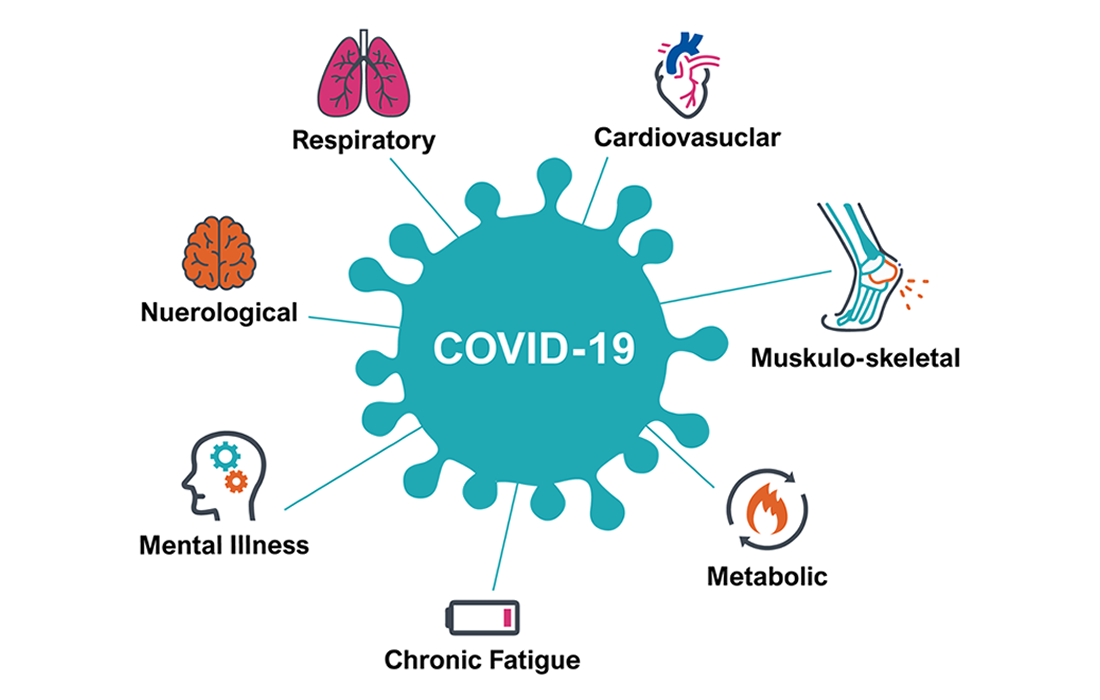COVID-19
More Than One Third of COVID-19 Patients May Have Long COVID
What is Long-COVID?
There is increasing concern and emerging evidence that some people who contract Coronavirus Disease 2019 (COVID-19) do not make a rapid or full recovery, the so-called “long COVID” or “long-haulers.”
This post-acute COVID-19 syndrome encompasses a range of features indicative of involvement of many organs affecting people weeks and months after infection. Somo of the symptoms reported are:
- Fatigue.
- Shortness of breath.
- Joint pain.
- Chest pain.
- Cough.
- Loss of smell.
- Runny nose.
- Red eyes.
- Loss of taste.
- Headache.
- Abdominal symptoms.
- Cognitive difficulties.
- Anxiety and depression.
What Do Studies Have Shown?
The results from a telephone survey in France (including 478 patients) showed that at 4 months after hospitalization for COVID-19, about 50% of patients had at least one feature of long-COVID.
In an app based cohort study with 4,182 cases of COVID-19, 13% of respondents self-reported longCOVID features, with some evidence for higher rates in women and older people.
Another investigation followed 1,733 patients hospitalized for COVID-19 for 6 months and found fatigue or muscle weakness in 63%, sleep difficulties in 26%, anxiety or depression in 23%, and lower rates of myalgia and headache. These studies lack a control group and have limited generalizability, because they focused either on hospitalized patients or individuals who voluntarily responded to a telephone survey or used an app.
Study from Oxford University
A team of researchers from the Oxford University in the United Kingdom used de-identified medical records of 273,618 COVID-19 survivors to assess the risk of having long COVID symptoms in the 6 months after the initial diagnosis.
The presence of persistent symptoms after an acute infection, known as post-viral syndrome, is common in viral infections. The researchers compared the incidence rate of long COVID symptoms after COVID-19 with those observed after the flu.
They found that more than one-third of the COVID-19 patients had long COVID symptoms 3 to 6 months after a SARS-CoV-2 infection. They saw that the symptoms were more common in women, older adults and those with severe symptoms during the acute phase.
The authors of the study found that nearly 37% of the individuals had at least one symptom of long COVID 3–6 months after the SARS-CoV-2 infection. Arroung 60% also exhibited one or more of these symptoms during the initial 90 days.
Women and younger individuals were more likely to experience headaches, anxiety or depression, and abdominal symptoms than men and older adults, respectively.
In contrast, cognitive symptoms and breathing difficulties were more frequent in older adults and men. Older adults were also more likely to experience fatigue and pain than younger patients.
Over 46% of the patients aged 10–21 years had at least one long COVID symptom during the 6-month period after the SARS-CoV-2 infection. Similarly, more than half of the non-hospitalized individuals also experienced one or more long COVID symptoms.
When compared to influenza, symptoms such as fatigue and brain fog are observed in both diseases after the acute phase.
Source:
Taquet M, Dercon Q, Luciano S, Geddes JR, Husain M, et al. (2021) Incidence, co-occurrence, and evolution of long-COVID features: A 6-month retrospective cohort study of 273,618 survivors of COVID-19. PLOS Medicine 18(9): e1003773. https://doi.org/10.1371/journal.pmed.1003773
https://es.endcoronavirus.org/long-covid
Image from: https://es.endcoronavirus.org/long-covid

